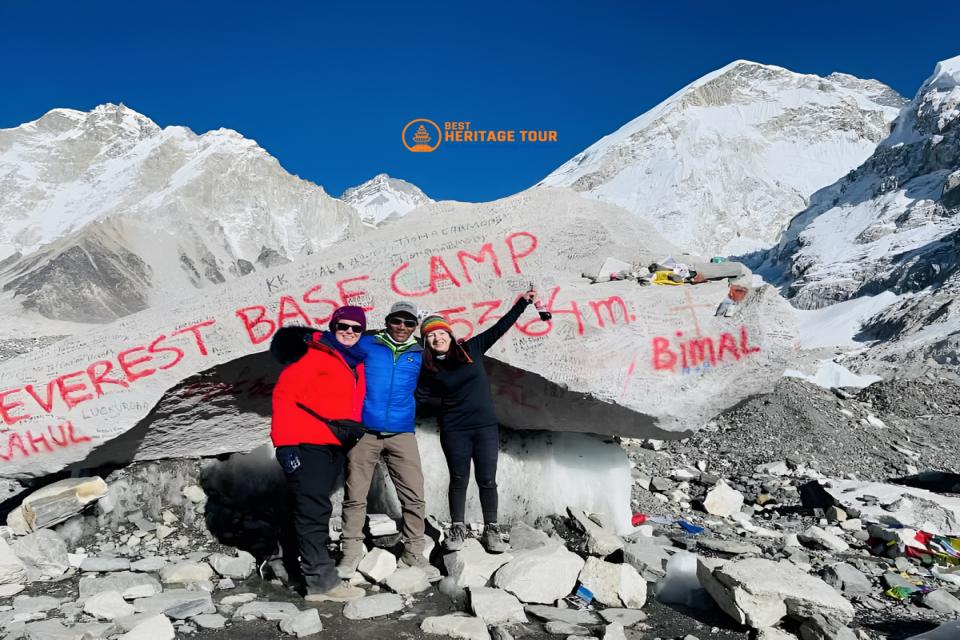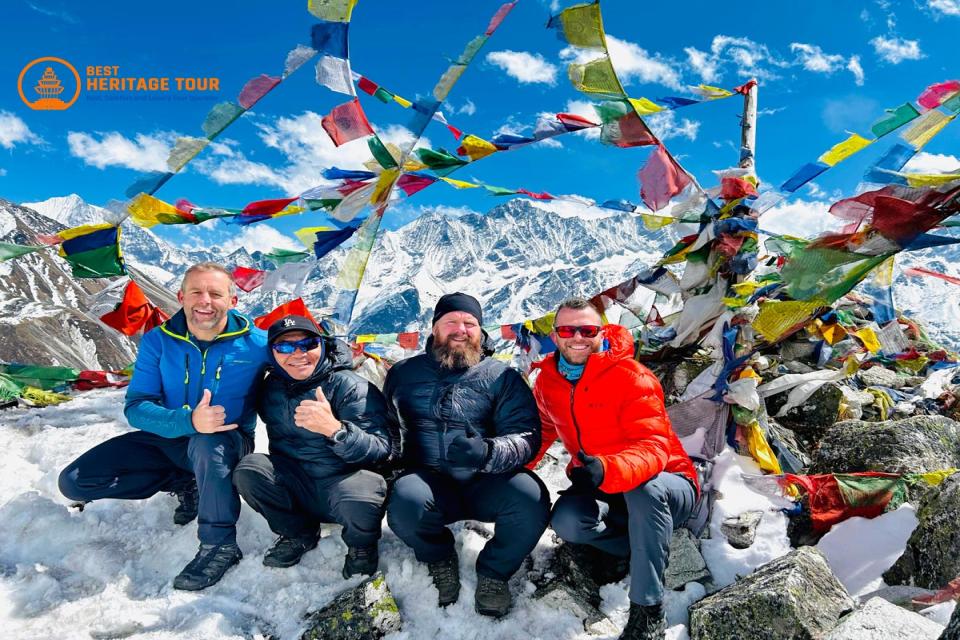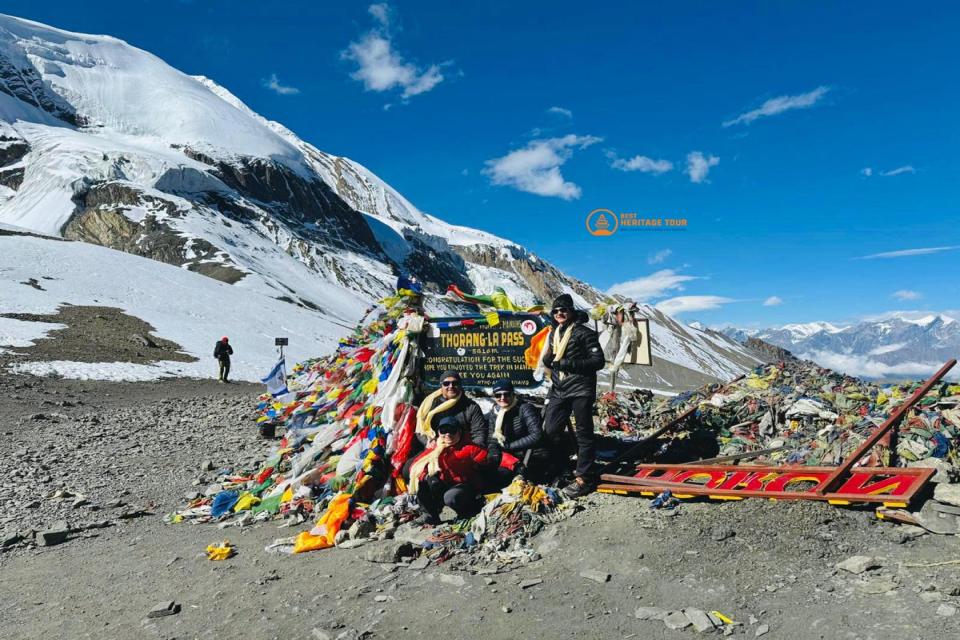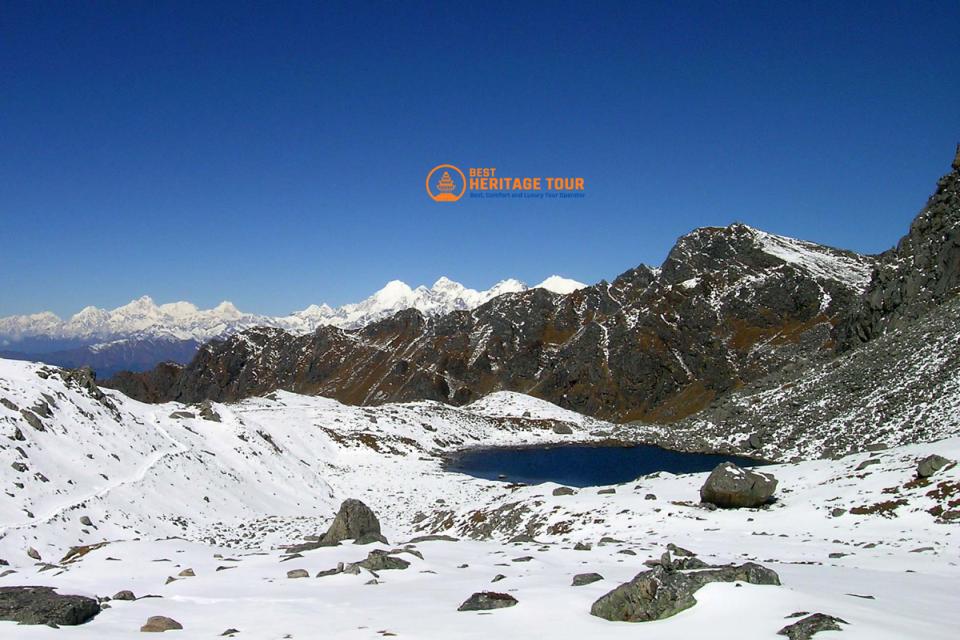Nestled in the heart of Nepal’s majestic Himalayas, the Langtang Gosaikunda Trek offers trekkers a unique blend of serene natural beauty, vibrant culture, and spiritual experiences. This combined trekking route, which weaves through the Langtang Valley and reaches the sacred alpine lakes of Gosaikunda, is a perfect escape for adventurers seeking less crowded paths, rich biodiversity, and authentic cultural encounters.
Unlike some of the more commercialized trails like the Annapurna Circuit or Everest Base Camp, the Langtang Gosaikunda Trek remains relatively off-the-beaten-path, making it ideal for travelers looking for tranquility and a closer connection to nature. The trek spans lush forests, alpine meadows, high mountain passes, ancient monasteries, and crystal-clear lakes, offering panoramic views of snow-capped peaks and vibrant local traditions.
In this comprehensive guide, we will walk you through the complete 14-day itinerary, detailed maps, trekking routes, and all the essentials you need to prepare for an unforgettable journey through one of Nepal’s most scenic trekking regions.
Overview of the Langtang Gosaikunda Trek
Where is Langtang and Gosaikunda?
The Langtang region is located about 70 kilometers north of Kathmandu, bordering Tibet to the north. It is part of the Langtang National Park, Nepal’s first Himalayan national park, famous for its diverse flora and fauna, including red pandas, Himalayan bears, and various bird species.
Gosaikunda is a high-altitude lake complex situated further north beyond the Langtang Valley, in the Rasuwa district. Known as a sacred pilgrimage site for Hindus and Buddhists alike, Gosaikunda sits at approximately 4,380 meters above sea level and is surrounded by stunning snow-capped peaks.
Why Combine Langtang Valley and Gosaikunda Lake?
While both Langtang and Gosaikunda treks are popular independently, combining them offers a rich trekking experience that merges cultural depth with natural grandeur. The Langtang Valley boasts traditional Tamang villages, Buddhist monasteries like Kyanjin Gompa, and vibrant alpine landscapes, while the Gosaikunda region offers pristine sacred lakes, challenging high passes like Lauribina La (4,610 m), and stunning views of the Langtang Himalayan range.
This combined trek is perfect for those wanting to explore remote areas with fewer tourists, gain insight into Himalayan culture, and witness some of Nepal’s most beautiful lakes and mountain panoramas in one journey.
Highlights of the Trek
- Langtang National Park: Trek through Nepal’s first Himalayan national park rich in biodiversity.
- Kyanjin Gompa: A cultural hub with monasteries, cheese factories, and hiking opportunities.
- Tserko Ri Summit: An acclimatization day hike offering breathtaking Himalayan views.
- Gosaikunda Lake: Sacred alpine lakes with clear turquoise waters surrounded by rugged peaks.
- Lauribina Pass (4,610 m): One of the highest points on the trek, offering dramatic mountain vistas.
- Tamang Culture: Experience warm hospitality, traditional villages, and Buddhist monasteries.
Langtang Gosaikunda Trek Map and Route Overview
-
Visual Trek Map
The Langtang Gosaikunda Trek starts at Syabrubesi, follows the scenic Langtang Valley to Kyanjin Gompa, then crosses Lauribina Pass to reach the sacred Gosaikunda Lakes, ending near Sundarijal or Dhunche. Using a detailed trekking map, both printed and offline apps like Maps.me or Gaia GPS are key for route planning and navigation.
Tip: Add a high-resolution route map image to help visualize the trek.
-
Key Trekking Routes and Trails
Here’s a breakdown of the primary trekking routes within the Langtang Gosaikunda trek:
-
Syabrubesi to Langtang Valley: Start the Langtang Gosaikunda Trek with a scenic 7–8 hour drive from Kathmandu to Syabrubesi (1,550 m). Trek through lush forests along the Langtang River, reaching Lama Hotel (2,380 m) and then Langtang Village (3,430 m).
-
Langtang Village to Kyanjin Gompa: Ascend to Kyanjin Gompa (3,870 m), a spiritual hub with monasteries and a cheese factory. Great for acclimatization and side hikes like Tserko Ri for panoramic Himalayan views.
-
Kyanjin Gompa to Gosaikunda via Lauribina Pass: Descend to Lama Hotel, then head east to Thulo Syabru and Sing Gompa, climbing to Laurebina (3,910 m). Cross Lauribina Pass (4,610 m), the trek’s highest point, then descend to Ghopte and reach Gosaikunda Lake (4,380 m).
-
Gosaikunda to Sundarijal/Dhunche: After exploring the sacred lakes, descend through alpine forests via Kutumsang and Chisapani to Sundarijal. Drive back to Kathmandu to end your Langtang Gosaikunda trek loop.
Tips for Navigating the Trekking Route
- Use a trekking map and offline GPS apps (e.g., Maps.me).
- Trail signs exist but can be unclear at high altitudes.
- A local guide helps with both navigation and cultural insight.
- Be ready for sudden weather changes, especially near Lauribina Pass.
Day-by-Day Langtang Gosaikunda Trek Itinerary (14 Days)
This detailed 14-day itinerary balances trekking distances, acclimatization, and exploration so you can enjoy the best of Langtang and Gosaikunda without rushing. Daily hiking times range from 4 to 7 hours, allowing time for rest and sightseeing.
Day 1: Kathmandu to Syabrubesi (1,550 m)
Day 2: Syabrubesi to Lama Hotel (2,380 m)
Day 3: Lama Hotel to Langtang Village (3,430 m)
Day 4: Langtang Village to Kyanjin Gompa (3,870 m)
Day 5: Acclimatization Day – Hike to Tserko Ri (4,984 m)
Day 6: Kyanjin Gompa to Lama Hotel
Day 7: Lama Hotel to Thulo Syabru (2,230 m)
Day 8: Thulo Syabru to Sing Gompa (3,250 m)
Day 9: Sing Gompa to Laurebina (3,910 m)
Day 10: Laurebina to Gosaikunda Lake (4,380 m)
Day 11: Cross Lauribina Pass (4,610 m) – Trek to Ghopte (3,440 m)
Day 12: Ghopte to Kutumsang (2,470 m)
Day 13: Kutumsang to Chisapani (2,160 m)
Day 14: Chisapani to Sundarijal and Drive Back to Kathmandu
Alternative Langtang Gosaikunda Trek Itinerary Options
If you’re planning the Langtang Gosaikunda Trek but have limited time or prefer different difficulty levels, here are popular alternative trekking routes and durations to consider:
-
Shortened Langtang Gosaikunda Trek
Ideal for trekkers with limited days but good fitness, this 10-day itinerary covers key highlights:
Day 1: Kathmandu to Syabrubesi
Day 2: Syabrubesi to Lama Hotel
Day 3: Lama Hotel to Kyanjin Gompa via Langtang Village
Day 4: Acclimatization hike to Tserko Ri
Day 5: Kyanjin Gompa to Thulo Syabru via Lama Hotel
Day 6: Thulo Syabru to Laurebina
Day 7: Laurebina to Gosaikunda Lake
Day 8: Cross Lauribina Pass to Ghopte
Day 9: Ghopte to Chisapani
Day 10: Chisapani to Sundarijal and drive to Kathmandu
-
Langtang Valley Trek Only (6-7 Days): Perfect for beginners or those wanting a shorter trek, this route covers Syabrubesi to Kyanjin Gompa and back without crossing Lauribina Pass or visiting Gosaikunda. Enjoy Langtang Valley trekking with rich cultural immersion and moderate altitude gain.
-
Gosaikunda Lake Trek Only (4-5 Days): For trekkers focused on sacred lakes and high alpine scenery, the Gosaikunda Lake trek from Dhunche or Sundarijal crosses Lauribina Pass but skips Langtang Valley. This is a popular choice for Gosaikunda trekking enthusiasts.
-
Helambu Circuit Extension (Additional 4-6 Days): Extend your adventure by combining the Langtang or Gosaikunda trek with the Helambu Circuit. This extension features beautiful forests, traditional Sherpa villages, and terraced hillsides, enriching your Nepal trekking experience.
Langtang Gosaikunda Trek Map
- Why Use a Trekking Map?
A trekking map is essential for navigating the Langtang Gosaikunda Trek, helping you track routes, altitudes, villages, and side trails. It supports daily planning and prevents getting lost in foggy or remote areas. Even with marked trails, weather and terrain changes can be confusing. Pairing a map with offline GPS apps boosts safety and confidence on the trek.
- Printable Trekking Maps
Printable maps are great for quick reference during the trek:
- Topographic detail: Shows elevation changes, rivers, and forests.
- Trail routes: Highlights key paths from Syabrubesi through Langtang Valley, over Lauribina Pass, to Gosaikunda and back.
- Villages and rest stops: Important for planning tea house stays.
- Permits and park boundaries: Identifies Langtang National Park areas.
Tip: Download free maps from official Nepal tourism sites or trekking blogs. Use waterproof paper for durability.
- Interactive Digital Maps
For tech-savvy trekkers, GPS-enabled apps offer interactive navigation with real-time location tracking:
- Maps.me: Popular for offline trekking maps, easy to use, and free.
- Gaia GPS: More advanced mapping with detailed topography and customizable features.
- AllTrails: Offers user-submitted trail data and reviews.
- Strava or Komoot: Useful for tracking routes and sharing trekking stats.
Tip: Download offline trekking maps before your Langtang Gosaikunda Trek, as mobile network coverage is limited in remote areas like Langtang Valley and Gosaikunda.
Tips for Using Maps on the Trek
- Always carry a backup map (physical or digital).
- Familiarize yourself with the route before setting off each day.
- Pay attention to altitude markings and estimated hiking times.
- If hiring a guide, use maps to double-check route plans.
- Use waypoints to mark campsites, water sources, and viewpoints.
Best Time for Langtang Gosaikunda Trek
Choosing the right season for your Langtang Gosaikunda Trek is essential to enjoy favorable weather, clear views, and safe trail conditions. Here’s a detailed guide to help you decide when to plan your trek.
-
Autumn (Sept–Nov): Best Trekking Season
- Weather: Clear skies, mild temps, low humidity
- Trail: Dry, stable, ideal for trekking
- Views: Stunning Langtang Himalayas & Gosaikunda lakes
- Flora: Rhododendrons bloom early season
- Crowds: Peak season, busy near Kyanjin Gompa
Note: Autumn is perfect for all trekkers.
-
Spring (Mar–May): Blooming Season
- Weather: Warmer, occasional showers
- Trail: Mostly dry, some mud patches
- Views: Blossoming rhododendrons & alpine flowers
- Wildlife: Active birds and animals
- Crowds: Moderate, quieter than autumn
Note: Spring is great for nature lovers.
-
Winter (Dec–Feb): Cold & Clear
- Weather: Cold, snow likely on Lauribina Pass
- Trail: Snow/ice on high trails, some closures
- Views: Crystal-clear mountain panoramas
- Crowds: Very few, peaceful solitude
Note: For experienced trekkers with cold-weather gear.
-
Monsoon (Jun–Aug): Wet & Risky
- Weather: Heavy rain, landslides, slippery trails
- Trail: Difficult, risky due to mud & floods
- Views: Limited visibility from clouds/rain
- Crowds: Very few trekkers
Note: Not recommended; prepare for wet gear if trekking.
Summary Table of Best Time for Trekking
|
Season |
Weather |
Trail Conditions |
Crowds |
Recommended For |
|---|---|---|---|---|
|
Autumn |
Clear, mild |
Dry, stable |
High |
Most trekkers, beginners |
|
Spring |
Warm, blossoming |
Mostly dry |
Moderate |
Nature lovers, flower seekers |
|
Winter |
Cold, snowy |
Snowy, icy |
Low |
Experienced trekkers |
|
Monsoon |
Rainy, slippery |
Risky |
Very low |
Not recommended |
Langtang Gosaikunda Trek Difficulty and Altitude
Understanding the physical and altitude challenges of the Langtang Gosaikunda Trek is crucial for proper preparation and a safe, enjoyable journey. This trek is generally classified as moderate to moderately difficult, with some strenuous days, especially when crossing high mountain passes.
-
Trek Difficulty Level
-
Overall Difficulty: Moderate
-
Terrain: Combination of well-marked dirt trails, forest paths, rocky ascents, and alpine meadows.
-
Daily Walking Time: Typically 4 to 7 hours, depending on altitude and route section.
-
Elevation Gain: Some steep ascents, especially on days approaching Kyanjin Gompa, Laurebina, and Lauribina Pass.
-
Physical Fitness: Recommended for trekkers with good basic fitness and some trekking experience, though beginners can manage with adequate acclimatization and pacing.
-
-
Key Challenging Sections
-
Day 5: Hike to Tserko Ri (4,984 m) for acclimatization, steep and physically demanding.
-
Day 10-11: Crossing Lauribina Pass (4,610 m), the highest and most challenging point on the trek, requiring endurance and care.
-
-
Altitude Profile and Acclimatization Tips
Altitude sickness (AMS) is a risk due to high elevations. Follow these tips to minimize risk:
-
Ascend gradually: Limit daily altitude gain to 300–500 meters above 3,000 m when possible.
-
Acclimatize properly: Spend an extra day at Kyanjin Gompa or take a day hike (like Tserko Ri) to adjust.
-
Stay hydrated: Drink plenty of water (3-4 liters/day).
-
Avoid alcohol and smoking: Both can worsen altitude effects.
-
Know symptoms: Headache, dizziness, nausea, fatigue; if severe, descend immediately.
-
Medications: Consult a doctor about acetazolamide (Diamox) before your trek.
Altitude Chart for Key Stops
|
Location |
Altitude (meters) |
Notes |
|---|---|---|
|
Syabrubesi |
1,550 |
Trailhead, low altitude start |
|
Lama Hotel |
2,380 |
Moderate altitude |
|
Langtang Village |
3,430 |
Moderate-high altitude |
|
Kyanjin Gompa |
3,870 |
Good acclimatization spot |
|
Tserko Ri Summit |
4,984 |
Optional high-altitude hike |
|
Laurebina |
3,910 |
Base for Lauribina Pass |
|
Lauribina Pass |
4,610 |
Highest point on the trek |
|
Gosaikunda Lake |
4,380 |
Sacred alpine lake |
|
Ghopte |
3,440 |
Descending after pass |
|
Sundarijal |
1,380 |
Trek end point |
Accommodation and Food on the Langtang Gosaikunda Trek
Proper rest and nutrition are key to enjoying your trek. The Langtang Gosaikunda route offers basic but comfortable accommodation and a variety of food options along the way.
1. Teahouse Accommodation
-
What Are Teahouses?
Traditional guesthouses offering simple rooms, warm meals, and a chance to rest and socialize. They are the primary lodging option on this trek. -
Facilities: Most teahouses provide a bed with blankets, shared or private bathrooms (toilet and cold water), and common dining areas. Some higher altitude teahouses may have limited hot water or electricity.
-
Availability: Teahouses are available at all major stops like Syabrubesi, Lama Hotel, Langtang Village, Kyanjin Gompa, Laurebina, and Ghopte. However, facilities get more basic and sparse near Gosaikunda Lake and Lauribina Pass.
-
Booking: No advance booking is generally required; you can book rooms as you arrive. During peak season, arriving early is recommended to secure a room.
2. Food Options on the Trek
-
Typical Menu: Most teahouses serve Nepali and Tibetan dishes such as dal bhat (lentil soup with rice), momo (dumplings), noodles, fried rice, soups, and omelets. Snacks like biscuits, chocolates, and instant noodles are also widely available.
-
Energy-Rich Meals: Since trekking is physically demanding, prioritize meals rich in carbohydrates and proteins. Dal bhat is ideal for energy and nutrition.
-
Drinks: Tea (milk or lemon), coffee, hot chocolate, and soft drinks are commonly sold. Boiled water is often available but consider carrying water purification tablets or filters to ensure safety.
-
Costs: Food prices increase with altitude due to transportation challenges. Expect to pay about 400–600 NPR for main meals near Kyanjin Gompa and Gosaikunda.
3. Drinking Water and Hygiene
-
Water: Tap water is generally unsafe; drink bottled water or boil water before consumption. Many trekkers use refillable bottles with purification methods.
-
Sanitation: Basic toilets with limited plumbing are common; carry your own tissue and hand sanitizer.
-
Electricity: Charging devices is possible at most teahouses for a small fee; power cuts can happen.
Tips for a Comfortable Stay and Eating
- Carry a lightweight sleeping bag liner or sheet for added comfort and hygiene.
- Bring some favorite snacks and energy bars for the trail.
- Eat regularly and hydrate well to maintain energy and prevent altitude sickness.
- Try local specialties to enhance cultural experience.
Permits Needed for Langtang Gosaikunda Trek
Before embarking on the Langtang Gosaikunda Trek, it’s mandatory to secure certain permits to legally enter and trek within protected areas of Nepal. Obtaining these permits helps preserve the environment and supports local communities.
1. Langtang National Park Permit
-
What is it?
This permit grants you entry to Langtang National Park, covering the Langtang Valley and surrounding regions including Kyanjin Gompa. -
Cost: Approx. NPR 3,000 (around USD 25) per person for foreign trekkers.
-
Where to Obtain: Available at the Nepal Tourism Board office in Kathmandu or at the Department of National Parks and Wildlife Conservation.
-
Validity: Usually valid for 15 days but can be extended if necessary.
2. Trekker’s Information Management System (TIMS) Card
-
What is TIMS?
TIMS is a registration system to monitor trekkers’ safety and trekking flow within Nepal. -
Cost: NPR 2,000 (around USD 17) for individual trekkers; group rates available.
-
Where to Obtain: TIMS cards can be acquired from the Nepal Tourism Board in Kathmandu or Pokhara, or through registered trekking agencies.
-
Requirement: Mandatory for most trekking areas, including Langtang and Gosaikunda.
3. Additional Notes
-
Permit Checks: Permit verification is common at entry points like Syabrubesi and at checkpoints along the trek.
-
Carry Your Permits: Always carry printed copies of your permits and a valid passport during trekking.
-
Permit Extensions: If your trek lasts longer than your permit validity, extensions are possible at official offices but plan accordingly.
-
Hiring a Guide/Agency: Many trekking agencies arrange permits on your behalf, simplifying the process.
Summary of Permit Costs
|
Permit |
Cost (NPR) |
Approx. USD Price |
|---|---|---|
|
Langtang National Park |
3,000 |
25 |
|
TIMS Card (Individual) |
2,000 |
17 |
What to Pack for the Langtang Gosaikunda Trek
Packing smartly is vital for enjoying your trek without unnecessary burden. The Langtang Gosaikunda Trek crosses diverse climates and altitudes, so layering and versatile gear are key.
Clothing
- Base Layers: Moisture-wicking shirts, thermal underwear
- Insulating Layer: Fleece or down jacket for cold
- Outer Layer: Waterproof, windproof jacket & pants
- Trekking Pants: Lightweight, quick-dry
- Hiking Shirts: Long & short sleeve for sun and insect protection
- Warm Hat & Gloves: For cold and Lauribina Pass
- Sun Hat & Sunglasses: Sun protection at low altitudes
- Trekking Socks: Breathable, cushioned pairs
- Gaiters: Optional, keep debris/snow out
Footwear
- Trekking Boots: Waterproof, sturdy, ankle support
- Camp Shoes/Sandals: Lightweight for rest
Trekking Essentials
- Backpack: 40–60L with rain cover
- Daypack: For daily hikes
- Trekking Poles: Ease knee strain
- Water Bottles: 2–3 liters capacity
- Water Purification: Tablets/filters/UV
- Headlamp: With extra batteries
- Sleeping Bag: Rated to -10°C
- Toiletries: Biodegradable soap, sanitizer, toilet paper
- First Aid Kit: Include altitude meds (Diamox)
- Sunscreen & Lip Balm: High SPF for altitude
- Camera/Phone & Power Bank
Optional Items
- Guidebook or Map
- Notebook & Pen
- Snacks: Energy bars, nuts
- Cash: Nepalese Rupees for permits and tea houses
- Trash Bag: For waste
Packing Tips: Pack light, layer clothes, and waterproof electronics; break in boots before trekking.
Cultural and Environmental Awareness on the Langtang Gosaikunda Trek
Trekking in Nepal is not just about stunning landscapes but also about experiencing rich traditions and fragile ecosystems. Being a responsible traveler helps preserve this heritage and supports local communities.
-
Respect Local Cultures and Traditions
-
Tamang and Buddhist Culture: The Langtang region is home to the Tamang people, whose Buddhist beliefs and monasteries, such as those in Kyanjin Gompa, are central to local life. Be respectful when visiting religious sites; remove shoes, ask permission before taking photos, and keep noise to a minimum.
-
Local Etiquette: Greet locals with a smile and “Namaste.” Dress modestly and avoid public displays of affection. When offered food or drink, accept politely.
-
Festivals and Rituals: If your trek coincides with local festivals, participate respectfully. These are often vibrant displays of music, dance, and prayer.
-
-
Minimize Environmental Impact
-
Leave No Trace: Pack out all trash, including biodegradable items. Use reusable water bottles and avoid single-use plastics.
-
Stick to Trails: Stay on marked paths to protect fragile vegetation and prevent soil erosion.
-
Respect Wildlife: Observe animals from a distance; do not feed or disturb them.
-
Campfires: Avoid making campfires as they damage the environment and deplete local wood supplies.
-
Water Usage: Use water sparingly, especially in dry or high-altitude areas.
-
-
Support Local Communities
-
Hire Local Guides and Porters: This provides economic benefits to the communities you visit and enhances your cultural experience.
-
Buy Local Handicrafts: Purchase souvenirs directly from local artisans to support their livelihoods.
-
Respect Community Rules: Follow guidelines provided by local authorities or lodge owners regarding waste disposal and respectful behavior.
-
Conclusion
The Langtang Gosaikunda Trek is a remarkable adventure that perfectly blends stunning Himalayan landscapes, rich cultural heritage, and spiritual experiences. From trekking through lush forests and traditional Tamang villages to crossing the challenging Lauribina Pass and visiting the sacred Gosaikunda lakes, this trek offers a unique and rewarding journey for nature lovers and adventure seekers alike.
With proper preparation, respect for local customs, and awareness of altitude challenges, trekkers can enjoy one of Nepal’s most beautiful and less crowded routes. Whether you’re a seasoned trekker or a passionate beginner, the Langtang Gosaikunda Trek promises unforgettable memories and a deep connection with the mountains and communities of Nepal.
Ready to plan your Langtang Gosaikunda Trek for 2026/2027? Let Best Heritage Tour handle everything, from expert local guides and hassle-free permits to custom itineraries suited to your schedule and fitness level. Whether you want to summit Tserko Ri, cross the iconic Lauribina Pass, or explore the sacred Gosaikunda Lake, we’ll ensure your Himalayan adventure is safe, smooth, and unforgettable. Trusted by trekkers worldwide, we offer fully guided, locally operated treks for all experience levels.
Book now or get more info now:
- Phone/WhatsApp/Viber: +9779851149197 / +9779810043046
- Email: bestheritagetour@gmail.com / info@bestheritagetour.com
- Website: www.bestheritagetour.com
- Location: Thamel Marg, Kathmandu, Nepal
Author: Best Heritage Tour
Date: 25th June, 2025







